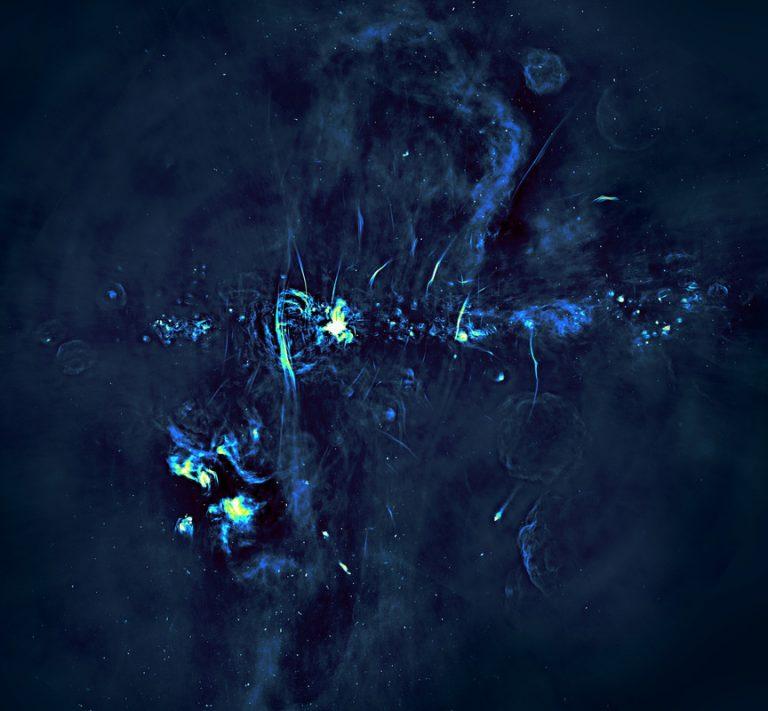South Africa’s MeerKAT telescope discovers giant radio ‘bubbles’ at centre of Milky Way

The impressive result is the first to come from observations using MeerKAT’s full 64-dish array, and reveals structures that have never been seen in such detail before. The findings are detailed in a Nature paper published today alongside a spectacular image (above) of the radio “bubbles”.
Operated by the South African Radio Astronomy Observatory (SARAO), MeerKAT is the world’s biggest radio telescope and one of two SKA precursor instruments in South Africa. Despite only recently entering full survey operations, the telescope is already displaying its scientific prowess and providing new insights into activity at the centre of the Milky Way.
The bubbles were caused by a phenomenally energetic burst that erupted near the Milky Way’s supermassive black hole a few million years ago. Until now, they have been hidden by the glare of extremely bright radio emission from the centre of the galaxy.
“Teasing out the bubbles from the background noise was a technical tour de force, only made possible by MeerKAT’s unique characteristics and ideal location,” says Fernando Camilo of SARAO in Cape Town, a co-author on the paper. MeerKAT is sited in a radio quiet zone in the Karoo region, which is also high and dry enough to minimise atmospheric disruptions to faint astronomical signals.
“This impressive MeerKAT image is likely to be the first of many that will permit new insights into the workings of the cosmos. This bodes well for what will be possible with SKA,” says SKA Science Director Dr. Robert Braun.
The exquisite detail of MeerKAT’s radio images is a step-change in the world of radio astronomy, something which will be built upon when it is integrated into the SKA’s mid-frequency array in the coming years.
“What makes such amazing images possible is the 64 MeerKAT radio telescopes working together as an array. The degree of complexity that can be faithfully captured in such radio images increases as the square of the number of radio telescopes that are used in concert,” Dr. Braun explains.
“This makes MeerKAT almost six times as powerful as the 27-antenna Jansky Very Large Array (JVLA) for this type of work. SKA1-Mid should improve on MeerKAT’s imaging capability by about another factor of 10, with its total of 197 telescopes working together.”
Lead institutions in the study included SARAO, Oxford University in UK, and NRAO and Northwestern University in the United States.
Read more about the result on the SARAO website.




